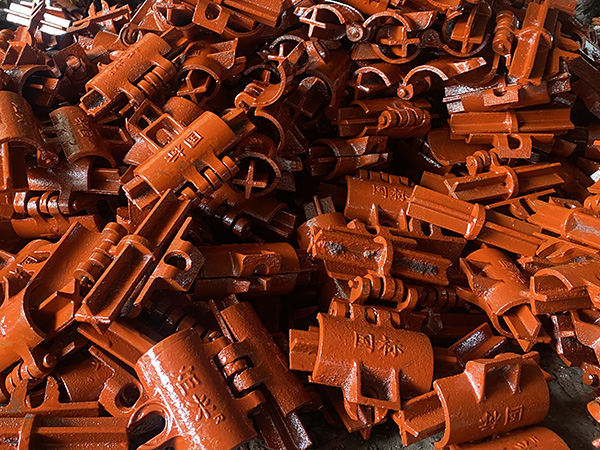- Site Navigation -

Building Coupler
A Building Coupler,most commonly known as a Scaffold Coupler or Scaffold Fitting,is a crucial mechanical component used to securely connect two pieces of scaffolding tubing(pipes)to......
Building Coupler:An Overview
A Building Coupler,most commonly known as a Scaffold Coupler or Scaffold Fitting,is a crucial mechanical component used to securely connect two pieces of scaffolding tubing(pipes)together.They are the fundamental joints that provide strength,rigidity,and stability to temporary structural frameworks,primarily in scaffolding systems for construction,maintenance,and repair work.
The primary purpose of a building coupler is to:
Create Rigid Structures:Transform individual tubes into a strong,load-bearing framework capable of supporting workers,equipment,and materials.
Ensure Safety and Stability:Prevent the scaffold structure from collapsing,swaying,or failing under load.
Provide Design Flexibility:Allow for the construction of scaffolds of various shapes,sizes,and configurations to fit complex building designs.
Facilitate Efficient Assembly and Dismantling:Enable quick and secure connection and disconnection of tubes for fast setup and teardown.
Key Types&Characteristics
Building couplers are typically made from drop-forged carbon steel or aluminum for an optimal strength-to-weight ratio.They are often hot-dip galvanized to provide superior corrosion resistance for long-term outdoor use.
The three main types of scaffold couplers are defined by their function:
1.Right-Angle Coupler(Fixed Coupler)
Function:This is the most common type,used to connect two tubes at a 90-degree right angle.It is essential for building the standard square or rectangular grid of a scaffold structure.
Design:It has two fixed clamps perpendicular to each other.
Use:Connecting ledgers to standards(horizontal members to vertical posts).
2.Swivel Coupler(Putlog Coupler)
Function:Used to connect two tubes at any angle.The clamps can pivot or swivel,making it indispensable for adding diagonal bracing(braces)and for connecting tubes to non-parallel surfaces.
Design:It has two clamps that can rotate relative to each other.
Use:Connecting transoms to ledgers,and most importantly,for fixing diagonal braces to the main scaffold structure to prevent sway.
3.Sleeve Coupler(Joint Pin Coupler)
Function:Used to connect two tubes end-to-end in a straight line to extend their length.It is crucial for creating long,continuous vertical or horizontal members.
Design:It is an internal or external sleeve that fits over or into the tube ends and is tightened with a wedge bolt or set screws.
Note:A**Band and Plate or Beam Coupler is a specific heavy-duty type used to connect scaffolding tubes to structural steel beams(I-beams),allowing the scaffold to be anchored to the building itself.
Common Applications
Tube-and-Fitting Scaffolding:The primary application for constructing custom scaffolding structures.
Formwork and Shoring:Supporting temporary structures for pouring concrete.
Temporary Stages and Grandstands:Building frameworks for event structures.
Safety Guardrails and Handrails:Erecting temporary edge protection on construction sites.
Industrial Maintenance:Creating access platforms around equipment and machinery.
Advantages
Exceptional Strength:Forged steel couplers provide a incredibly strong and reliable connection.
Versatility:The different types allow for the creation of almost any structural shape.
Safety Compliance:Manufactured to meet strict international standards(e.g.,BS EN 74,AS/NZS 1572).
Durability:Galvanized coating protects against rust and wear,ensuring a long service life.
In summary,the building coupler is an indispensable,high-strength connecting device that forms the backbone of safe and adaptable temporary access structures in the construction industry.








